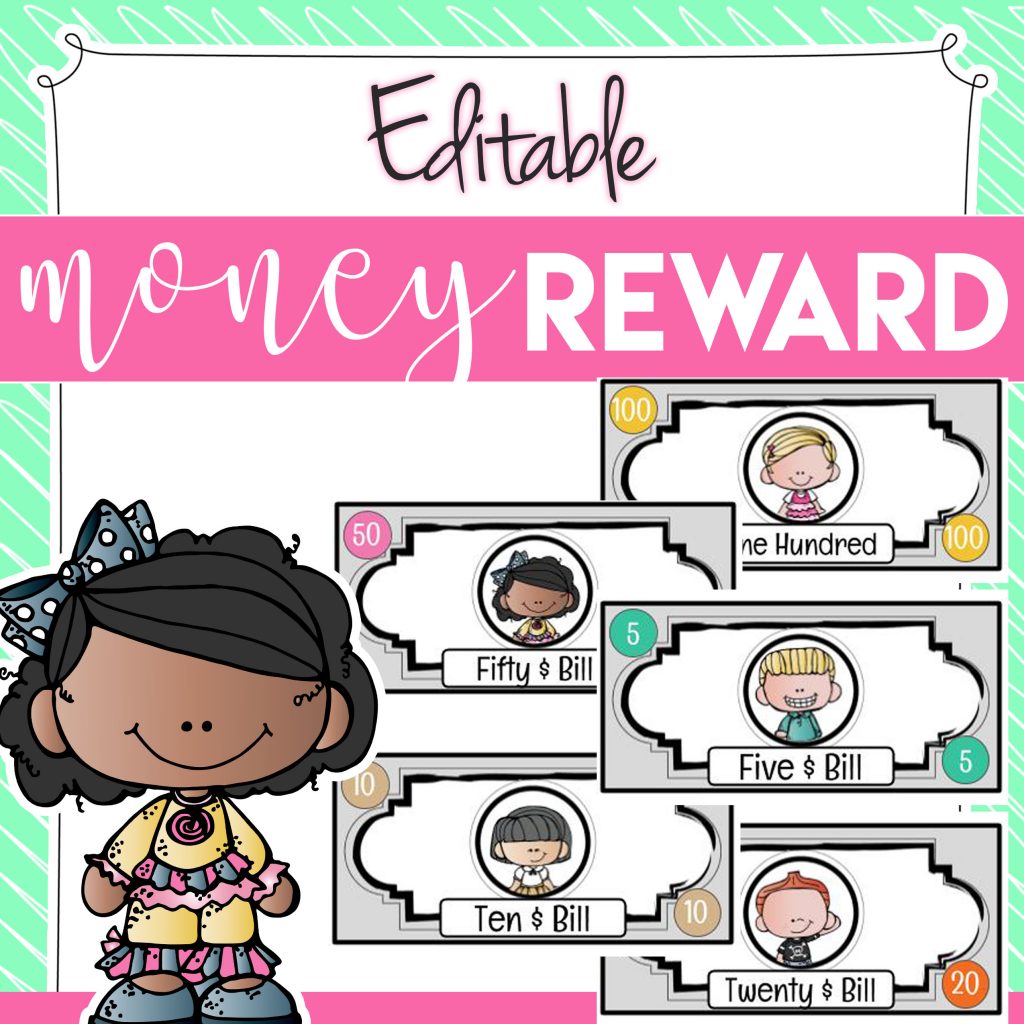
How to Motivate Students with Classroom Rewards?
Using a money reward system in classrooms can be a great way to motivate students to achieve goals and behave in the best ways for learning to happen in a group setting. Whether you are thinking about using real money (some people use coins and dollar bills!) fake school or classroom cash, or tickets and tally charts, there are many options to choose from. What is most important before planning out your classroom money reward system is that you get to know your students and what is most likely to motivate them for learning.
Why Consider Money Rewards for the Students?
Especially in the younger grades, students respond best to feedback when teachers can make that feedback visual. Rewards are a wonderful management tool when students are given the chance to earn them for positive things, without the pressure of losing them for making mistakes. In other words, if they earn a penny you can’t take it back later. The idea is to reinforce positive behaviors rather than recognize poor behavior. If the teacher stays consistent with the rewards for the same few parts of the scheduled learning day, then the students learn to trust the teacher and that positive behaviors will yield positive results for them.
Options for How to Use Money Rewards in the Classroom
One of the best ways to introduce an earned reward system in the classroom is by implementing the rewards as incentive for silent reading time. As a teacher, this avoids the feeling you have to reward all kinds of different things all day long, and it is a great place to start money or classroom cash rewards at the beginning of the year. Silent reading time is an integral part of all Reading and Language Arts instructional time, so letting the students know they can earn tokens, tickets, or money for their time spent reading and being engaged with text really gets them willing to spend some quiet time. Consider having the students earn a set amount before getting a bigger reward (i.e. 5 “book bucks” means you earn a free book from the classroom library to keep at home). Kids love knowing that you’re on the lookout for positives during their reading time.
Group work participation is another area that can benefit from a classroom money or reward type system. After instruction has taken place and practice time directions have been given, a teacher can spend their time “floating” around to different groups of students to give out tickets or check marks for a variety of behaviors they’d like to continue. For example, students completing learning tasks correctly, positive interactions with peers and “helping” each other out during the work is another really positive behavior a teacher would want to continue to see happen. When you give positive recognition and rewards for that behavior, students are happy to engage with content.
Money rewards for following directions can also be effective. Using tally marks or stickers on a chart to demonstrate to students when they have followed directions quickly and accurately is a quick and easy way to keep track of positives. Later, they can count up the number of tallies they have earned in order to get more of your classroom cash!
Another reason to consider rewarding students with a classroom money system is for their motivation toward setting and achieving individual goals. Perhaps once a week, you can call students over to talk about a personal goal, and give them your agreed upon currency to use toward a chosen item. Some teachers use treasure boxes to pick treats from. There are also options to have a classroom or school store with supplies and fun toys, or even homework passes and lunch with the teacher are things kids love to earn. Students will collect their classroom money if they know they can earn some free time to talk, also!
Types of Tokens Leading to Rewards or Celebrations
The many items a teacher might use as “tokens” or “classroom cash” as mentioned above is limited only to their imagination. There are digital platforms that allow you to assign virtual points to students for meeting your expectations throughout the school day. Some teachers use tickets on roll, to enter into a drawing held at the end of each week–more tickets equals more chances to win a prize! Tally marks can be traded in for stickers, stickers can be crossed off toward a homework pass, and dollars and coins can not only be saved up for the school store, they reinforce important economics and math learning standards.
Items and things that students can “pay for” with their earned rewards can also vary by teacher, classroom, and school. Free time for talking with friends or game playing is a great way for teachers to save money on a class prize. Braver teachers may allow students to earn the right to sit by a friend for the day, or chew gum in class for 30 minutes. There are also the more concrete reward options, like a pizza or ice cream party, class movie day, toys from the treasure box, or a new book from the class library. Whatever currency and reward system a teacher chooses to use, it must be motivating for the students and be consistently used and revisited in order to be important to the class. Teachers can manage their classroom effectively if they use these or other types of classroom money ideas.